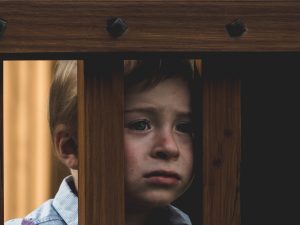In the last twenty years, depression among teens and adults has become more common, or at least more recognized. In a study performed in 2013, 10.7% of those between the ages of 12 and 17 had one major depressive episode. This is defined as a period of at least two weeks where the person loses their ability to function normally. How to recognize anxiety in your child?
While a lot of research and resources are available for teens and parents of teens with depression, there is little for those with younger children. A big reason is that depression does not manifest the same way in preteens. They are far more likely to show signs of anxiety. What does anxiety in children look like? There are three main categories: social phobia, separation anxiety, and generalized anxiety disorder.

How to Recognize Anxiety in Your Child
● Social phobia
Your kid has a lot of trouble in social situations. They won’t talk to anyone except their parents or siblings, and often throw tantrums when they have to go to school or other social events.
● Separation anxiety
This is not limited to babies. Your child hates being away from you, whatever the situation, and often becomes sick (headaches, upset stomach). Your child is not faking these illnesses; anxiety has actually become poisonous to their bodies. Social phobia and separation anxiety are very similar.
● Generalized anxiety disorder
Your kid is worried about their future all the time. They have serious trouble enjoying any of their successes because they’re looking ahead to the next thing and freaking out about it.
It is very important to catch anxiety in childhood because it is very likely to morph into depression. 50% of teens with depression had an anxiety disorder when they were kids. Dealing with their anxiety when they’re young won’t necessarily prevent depression from developing, but it will better prepare them to manage it. Medication is a controversial topic, especially when the child is young, but there are other ways to deal with anxiety in your kids, including talk therapy and adjusting your expectations. The most crucial step is to acknowledge that your child’s anxiety is real, and not to shrug it off as “kids being kids.” If your child doesn’t think they can come to you for help, their anxiety will only get worse.




